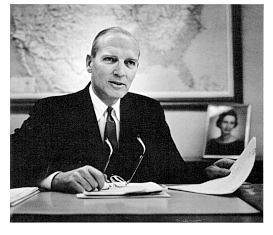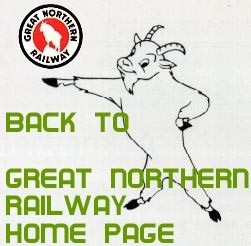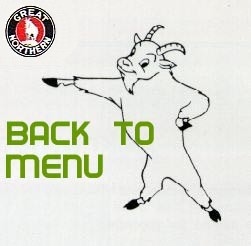|


| |

President's Report to Employes: "An eventful and
forward-moving year in the life of Great Northern"
Ours is a swiftly-paced civilization in which we literally are reaching for the
stars - when current history is being written in the "science fiction"
vocabulary of celestial travel. But those of us who are more immediately
concerned with terrestrial transportation know that the story of man's progress
is still being recorded in the down-to-earth language of railroading, too.
This 24th Annual Report to Employes mirrors an eventful and forward-moving year
in the life of Great Northern. Essentially the Annual Report is an accounting of
our cooperative effort in operating and improving the property, and as such is
based on financial and statistical data which all railways must provide the
Interstate Commerce Commission. The picture would be incomplete, however,
without mention of some of the significant developments which affected Great
Northern and the railway industry in 1962 and thereby touched all of our lives.
We began GN's second century together
One event which gave us a stimulating personal sense of participation in history
was the commemoration on June 28, 1962 of Great Northern's Centennial of
service, recalling the maiden run of the William Crooks between St. Paul and
Minneapolis 100 years ago. While it is pioneering in space rather than in the
"wide open spaces" of the West which fires the popular imagination
today, I hope that those of us who have been privileged to begin Great
Northern's second century together do so with a sense of our continuing destiny.
For given the opportunity to fully utilize the marvelous potential of the
railroad, we will serve our growing territory with increasing efficiency for
many years to come.
Certainly one of the vital keys to tapping that potential is our proposed merger
with the Northern Pacific, Burlington and Spokane, Portland and Seattle
railways. History will record 1962 as a year of important progress toward our
goal of creating a vigorous, unified system.
The public hearing phase of the merger, which began October 10, 1961 in St.
Paul, finally was concluded in Minneapolis on July 10, 1962. During this
nine-month period Interstate Commerce Commission Examiner Robert H. Murphy
conducted 82 actual days of hearings in 16 cities throughout the territory
served by the merging lines. Various issues touching upon the question of public
interest were exhaustively treated by the testimony of 623 witnesses, 393 of
whom supported the merger. Transcript of testimony totaled 15,004 pages, 10,051
of which were devoted to cross-examination by all parties.
Examiner's merger recommendations awaited
Briefs were filed with Examiner Murphy by 29 of the interveners on January 4,
1963, and at this writing he is preparing his report and recommendations. All
parties will have the opportunity to file exceptions to his report and to
comment on the exceptions of others through reply briefs. The case then goes to
the Commissioners for decision.
As we await these final developments in the merger timetable, I would like to
reiterate my absolute conviction that the consolidation of the four companies is
desirable not only in the broad public interest but in the collective personal
interest of employes. Immediate job protection is vital, and that which is
guaranteed railway employes under Federal law and the Washington Job Protection
Agreement is unparalleled in other industries. But job stability and opportunity
for the future can be vested only with a healthy, growing,
competitively-successful company of the type which merger promises to create.
While I do not look to merger as a panacea, I believe that is has been
demonstrated convincingly that this is the most acceptable means of self-help
available to us for reversing the erosion of traffic and employment on our
lines, and for securing for us a vital role in the continuing development of our
territory.
Kennedy's message to Congress encouraging
Hope for eventual surgery on a basic cancer afflicting the railway industry -
that of restrained competitive opportunity - was raised to new heights in 1962
when President Kennedy addressed his historic April message to Congress on the
"pressing problems...burdening our national transportation system."

 
|